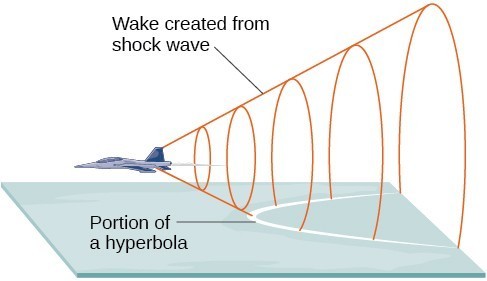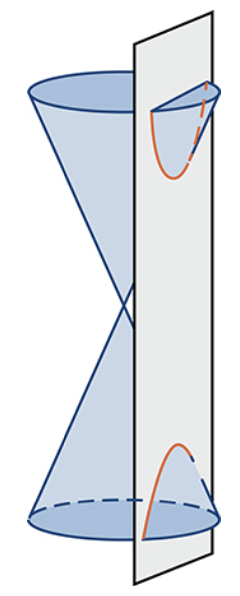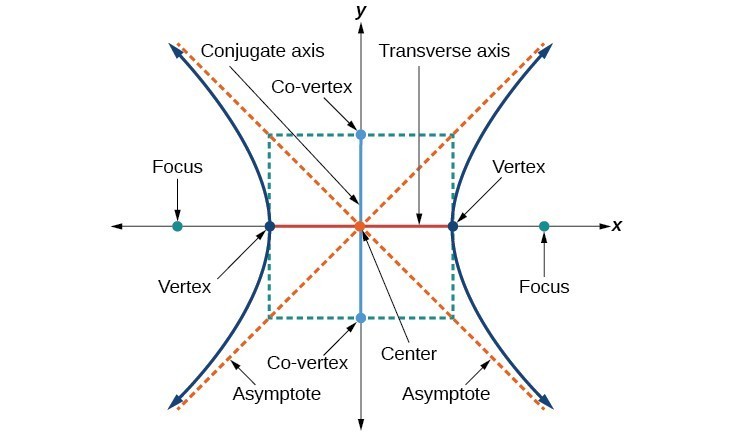- Identify the key points of a hyperbola, including where it turns and its focus points
- Write equations of hyperbolas in standard form
- Draw hyperbolas on a graph, noting how their position and orientation change based on their center
- Solve applied problems involving hyperbolas
Hyperbolas
A shock wave intersecting the ground forms a portion of a conic and results in a sonic boom.
Most people are familiar with the sonic boom created by supersonic aircraft, but humans were breaking the sound barrier long before the first supersonic flight. The crack of a whip occurs because the tip is exceeding the speed of sound. The bullets shot from many firearms also break the sound barrier, although the bang of the gun usually supersedes the sound of the sonic boom.
A portion of a conic is formed when the wave intersects the ground, resulting in a sonic boom. This portion is a hyperbola.

In analytic geometry, a hyperbola is a conic section formed by intersecting a right circular cone with a plane at an angle such that both halves of the cone are intersected. This intersection produces two separate unbounded curves that are mirror images of each other.

Like the ellipse, the hyperbola can also be defined as a set of points in the coordinate plane. A hyperbola is the set of all points [latex]\left(x,y\right)[/latex] in a plane such that the difference of the distances between [latex]\left(x,y\right)[/latex] and the foci is a positive constant.
hyperbola
A hyperbola is all points in a plane where the difference of their distances from two fixed points is constant. Each of the fixed points is called a focus of the hyperbola.
Characteristics:
- The line through the foci is called the transverse axis.
- The two points where the transverse axis intersects the hyperbola are each a vertex of the hyperbola.
- The midpoint of the segment joining the foci is called the center of the hyperbola.
- The line perpendicular to the transverse axis that passes through the center is called the conjugate axis.
- Each piece of the graph is called a branch of the hyperbola.
As with the ellipse, every hyperbola has two axes of symmetry. The transverse axis is a line segment that passes through the center of the hyperbola and has vertices as its endpoints. The foci lie on the line that contains the transverse axis. The conjugate axis is perpendicular to the transverse axis and has the co-vertices as its endpoints. The center of a hyperbola is the midpoint of both the transverse and conjugate axes, where they intersect. Every hyperbola also has two asymptotes that pass through its center. As a hyperbola recedes from the center, its branches approach these asymptotes. The central rectangle of the hyperbola is centered at the origin with sides that pass through each vertex and co-vertex; it is a useful tool for graphing the hyperbola and its asymptotes. To sketch the asymptotes of the hyperbola, simply sketch and extend the diagonals of the central rectangle.

In this section we will limit our discussion to hyperbolas that are positioned vertically or horizontally in the coordinate plane; the axes will either lie on or be parallel to the x- and y-axes. We will consider two cases: those that are centered at the origin, and those that are centered at a point other than the origin.